The purchasing risks he describes come with responsibilities. Businesses that import seafood are legally required to undertake due diligence to ensure they’re not buying illegal catch. They also have to be able to demonstrate the steps they take to ensure the legal purchase.
Those steps support port inspectors, whose job is to check catch certificates supplied by foreign exporters. Regular audits assess whether the countries that import seafood to the European Union—there’s an approved list—are honoring agreements to keep illegal catch out of their exports. Problem nations are graded with yellow and red cards that help businesses understand where the greatest risks lie when they’re buying seafood from abroad. When they improve, those colors switch to green.
In the U.S., there’s no such framework. Instead, port inspectors are the only bulwark against all illegal catch. The U.S. does have a Seafood Import Monitoring Program, but the regulators that oversee it don’t often issue information that helps businesses understand purchasing risk. Brands that import seafood face no legal liability if they buy illegal catch. Neither do retailers. In short, there is little incentive to do anything more than shrug about widely known abuses of fishing and humanitarian rules.
Some American importers are interested in trying to resist illegal fare anyway, especially more boutique retailers that serve a more socially conscious shopper. But the marketplace doesn’t make it easy. Huw Thomas, a seafood industry consultant for Global Fishing Watch, says that to really assess the sustainability and human rights record of a product, “there’s 200 data sets that a business would need to know. It’s beyond their capabilities to get their arms around it.” Retailers also stock tens of thousands of products, and struggle to prioritize what to check.
But retailers do have power. Lots of it, though the weight of the lucrative end of the supply chain has not been brought to bear on better regulations, frameworks, and accountability for tuna suppliers. It’s a fact that allows bad actors to fish as profitably as the vast majority of those who follow the rules, if not more so.
What’s more, the brands that rule the cans—StarKist, Chicken of the Sea, Bumble Bee—are all following the lead of the U.S.’s largest grocers. Those brands have all been purchased by Asian companies since 2000. Bumble Bee was bought by Fong Chun Formosa Fishery Company, Ltd. (FCF) of Kaoshiung, Taiwan, in 2021; StarKist by Dongwon Group of Seoul and Busan, South Korea, in 2008; and Chicken of the Sea was fully acquired by Thai Union Group of Samut Sakhon, Thailand, in 2000. As each company has reorganized its leadership, sustainability commitments have shifted.
Chicken of the Sea has continued some efforts. The company has a vessel code of conduct program, and it said in a statement that it is engaged in third-party audits of its supply chain. Its leadership has joined the boards of other organizations aimed at reducing illegal fishing and human rights abuses. It’s also made commitments to source all of its tuna from monitored vessels, either human or otherwise, and to reduce fishery bycatch, though the deadlines for meeting those goals are still ahead.
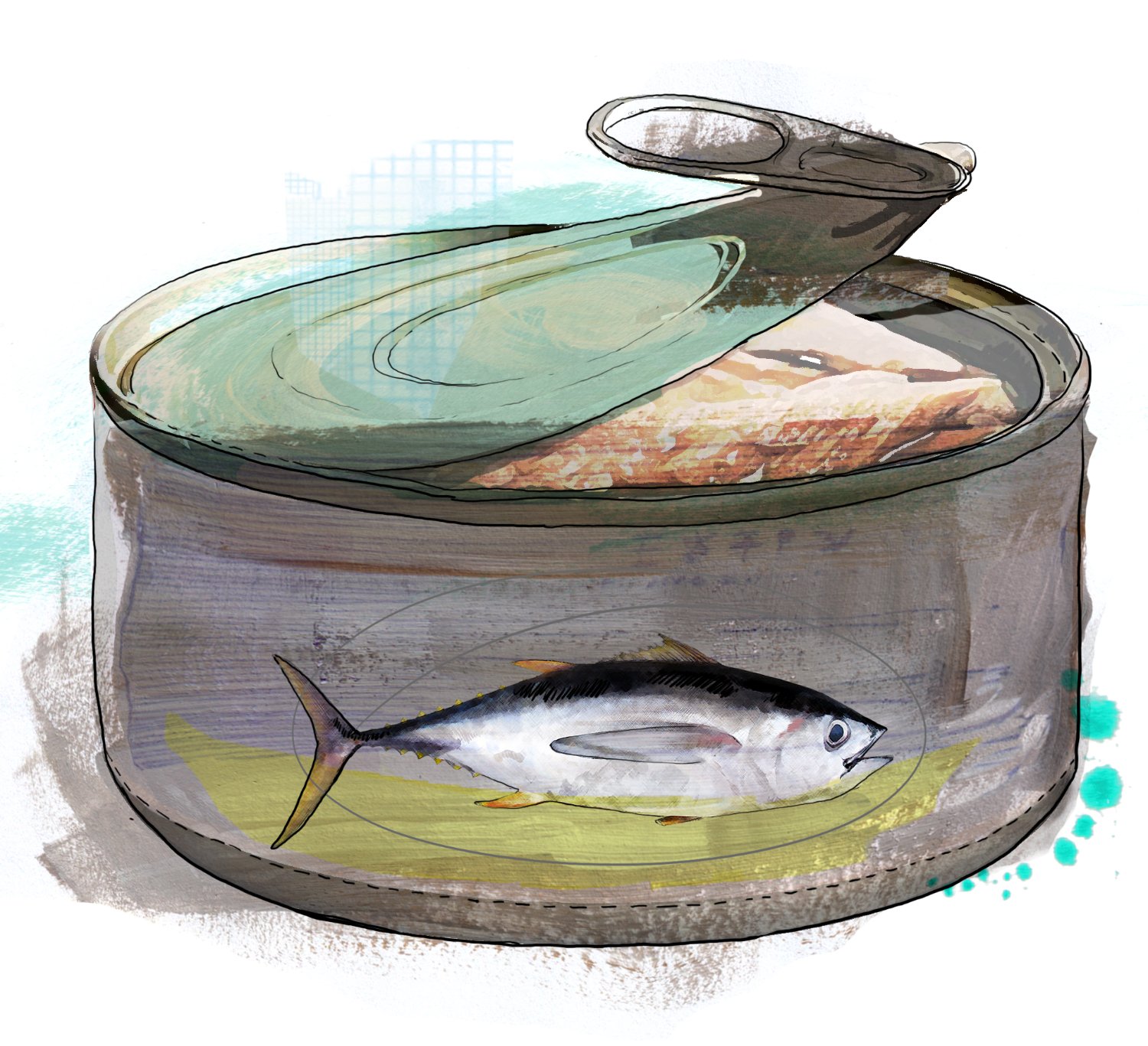
Illustration credit: Tina Zellmer
At Bumble Bee, however, trends toward cleaning up the supply chain have reversed course, with its former sustainability targets ratcheted downward since its FCF buyout. Bumble Bee did not respond to requests for comment about these issues. StarKist also did not respond to a request for comment about its efforts to combat illegal seafood and human rights abuses. “These companies are super sensitive to what the retailers are asking,” said Suddaby. And yet, he adds: “Some of the big retailers in the U.S. have limited understandings of the sustainability issues.”
This is why many large U.S. retailers default to third-party certifiers like the Marine Stewardship Council (MSC) instead of staffing or partnering with qualified, experienced marine science advocates. “What would really be supportive for sustainability, as well as the MSC push, is having the big retailers say to FCF, ‘You need to greatly increase observer coverage,’” said Suddaby.
Instead, MSC certifies seafood to environmental standards. It is seen as better than nothing by advocates. But it lacks clear human rights standards, even though its certifications depend on the work of marine observers, as well as the work of the crews that catch the fish. The approach hasn’t worked to defend against human rights abuses. In the last seven years, Human Rights at Sea (HRAS) found, four observers have gone missing from or died suspiciously aboard four different vessels that were authorized to fish MSC-certified tuna by regional authorities. A fifth observer had also disappeared from a vessel in 2010. His remains were later recovered—his legs and body bound by chains.
In a statement, MSC’s head of social policy, Oluyemisi Oloruntuyi, stressed that the organization certifies only fisheries, not the boats that catch MSC fish, which are determined by regional fisheries authorities. Two of the boats on which observers died never did fish MSC catch, despite having permission to, according to the statement. And MSC questions the motivations behind the report, which HRAS discloses was funded by World Wise Foods. World Wise Foods shares a chairman with the International Pole and Line Foundation, an organization that promotes competing sectors and is a historic critic of the fishery, and sources tuna from a commercial competitor.
Such hair-splitting statements effectively allow MSC to avoid accountability for the challenges faced by observers, but they are hallmarks of the global tuna industry. And while the Sea Quest was fishing conventional—not MSC—tuna at the time, this is the marketplace that Cagilaba was working in while under threat and under-slept aboard the Sea Quest in 2015.
Certain of the dangers, he hastened to get off at the next port. His supervisors had already told him to stay on board via email. But once the Sea Quest docked in the Marshall Islands, Cagilaba quickly made contact with the observer coordinator for the Ministry of Fisheries. He tried again to relay his unease about the fudged catch reports, the threats from the captain, and the captain’s call to the American official who’d relayed the fictitious narrative of the trip to his bosses. The coordinator downplayed Cagilaba’s account, according to Cagilaba’s statements to Congress. Then he told him to get back on the boat.
Later, Cagilaba learned that the coordinator was friends with the Sea Quest’s agent, another cog in a shaky wheel, rattled by corruption. Once told to get back aboard, he knew his report would be buried. And that if he didn’t make it known soon, somehow, he was unlikely to get off the Sea Quest alive.
‘Retailer Apathy’ for Addressing Marine Observer Safety
This is the part of the industry that is lesser known: How shaky this wheel is. Observer harassment aboard fishing vessels is well understood. But that observers face harassment from compromised program and agency staff is less common knowledge.
According to the survey of American observers by NOAA Fisheries, among the 46 percent who said they had been harassed at sea, most were either dissatisfied or nonplussed by the experience of reporting it. Nearly 60 percent of those who made reports said there was no response. And some feared the repercussions of saying anything: fewer deployments, assignments back to problem vessels. “Some respondents mentioned that most of time they handled situations on their own, since they felt that some observer program staff would not take their reports seriously,” the survey found.
The extent to which officials in observer programs and oversight agencies were being co-opted into the dark underworld of tuna—and how often tuna brands play along—would become better understood in 2020. That’s the year that Eritara Aati Kaierua, a fishery observer from Kiribati, was brought ashore lifeless by a Taiwanese purse seiner, the Win Far 636, after a tuna fishing trip off the coast of Nauru.
Observer harassment aboard fishing vessels is well understood, but observers also face harassment from compromised program and agency staff.
Kaierua should have been protected under the new WCPFC mandate for observer safety. But while working as part of a special project to certify tuna for MSC, he was found dead in one of the boat’s cabins. An autopsy later conducted in Fiji found he had died from a blow to the head. Local authorities next opened a murder investigation, but it has never concluded.
“We initially heard that it was homicide. Then seven months later, we heard of a second opinion that changed the cause of death to natural causes due to hypertension,” Nicky Kaierua, his sister, said in an email. She added that she has seen the initial autopsy report on her brother and is confident that hypertension didn’t cause his death. That word—hypertension—has now been used to explain two other observer deaths, and families of observers missing and murdered in the Pacific have come together in grief to note their experiences with its use.
Some charge that authorities are unmotivated to resolve such cases in countries that are economically dependent on fishing, or reluctant to take a tough stance on all crimes at sea. Tuna accounts for a substantial share of jobs in the Pacific Islands and an often-larger share of public spending. In Kiribati, for example, tuna revenues fuel 63 percent of the national budget. The geopolitics and jurisdictional mayhem involved with prosecuting crimes aboard foreign fishing vessels, or involving citizens from other countries or both, also don’t make it easy.
Meanwhile, Nicky Kaierua said, “My brother’s ‘unsolved’ death has had devastating impacts on our family.” Like many observers, Kaierua was his family’s breadwinner, supporting a wife and four children who have had little financial support since he died. “Fisheries observers are often forewarned that the job is risky. They are also told that the position comes with good pay because of the risk that comes with it. My brother earned 60 Australian dollars a day. Should we be lenient on their safety because they get a little bit extra?”
According to the investigation by Human Rights at Sea, after the Win Far 636 brought Kaierua’s body back to port, it took regional authorities another 38 days to suspend the boat’s certificate to fish in the MSC program. MSC later emphasized that its certification was an environmental standard, not a human rights one, in a statement, which noted that it took steps to assure that no catch from the vessel entered the supply chain as MSC-certified.
Some charge that authorities are unmotivated to resolve such cases in countries that are economically dependent on fishing; in Kiribati, for example, tuna revenues fuel 63 percent of the national budget.
APO has since recommended that programs like MSC have criteria that protect observers and processes that gauge whether those programs work. APO has also pressed the international community to outlaw observer harassment globally and document observer deaths for the public.
In response to such critiques, the MSC introduced new requirements in October 2022 that “entities involved in unacceptable conduct inclusive of mistreatment of crew and fisheries observers must be removed from MSC certificates.” It also gave $137,000 toward the development of communications technology and a review of observer programs in April 2021. But those changes won’t impact the Win Far 636. In July 2022, after no criminal charges were filed in Kaierua’s death, the boat was again certified to fish MSC tuna through 2025.

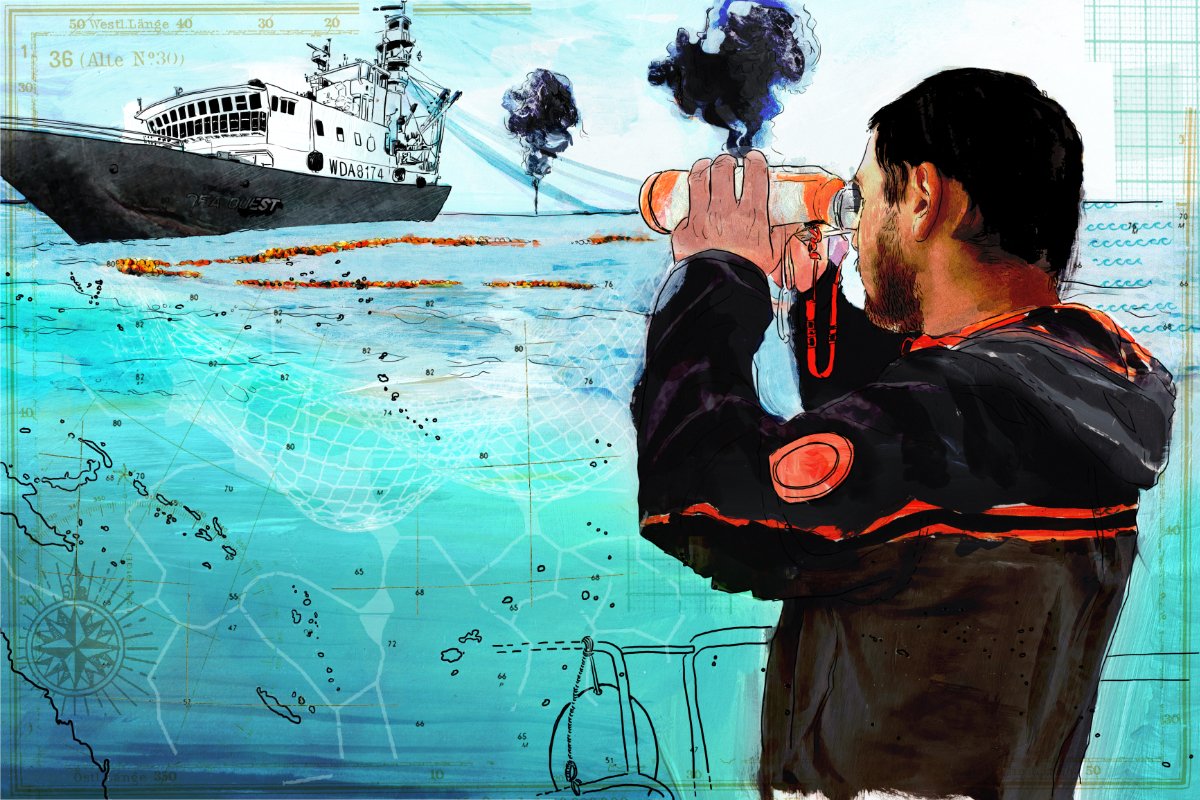
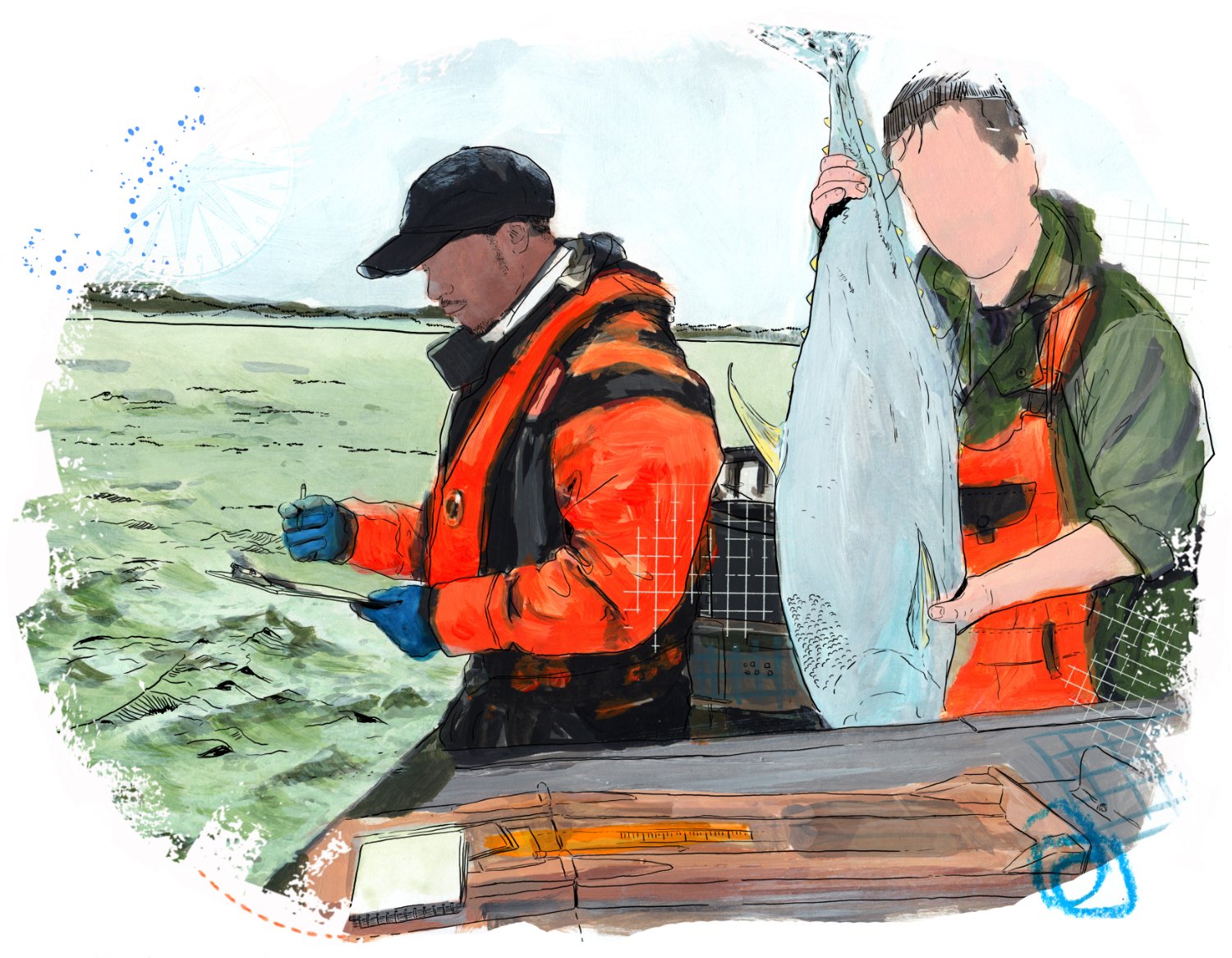
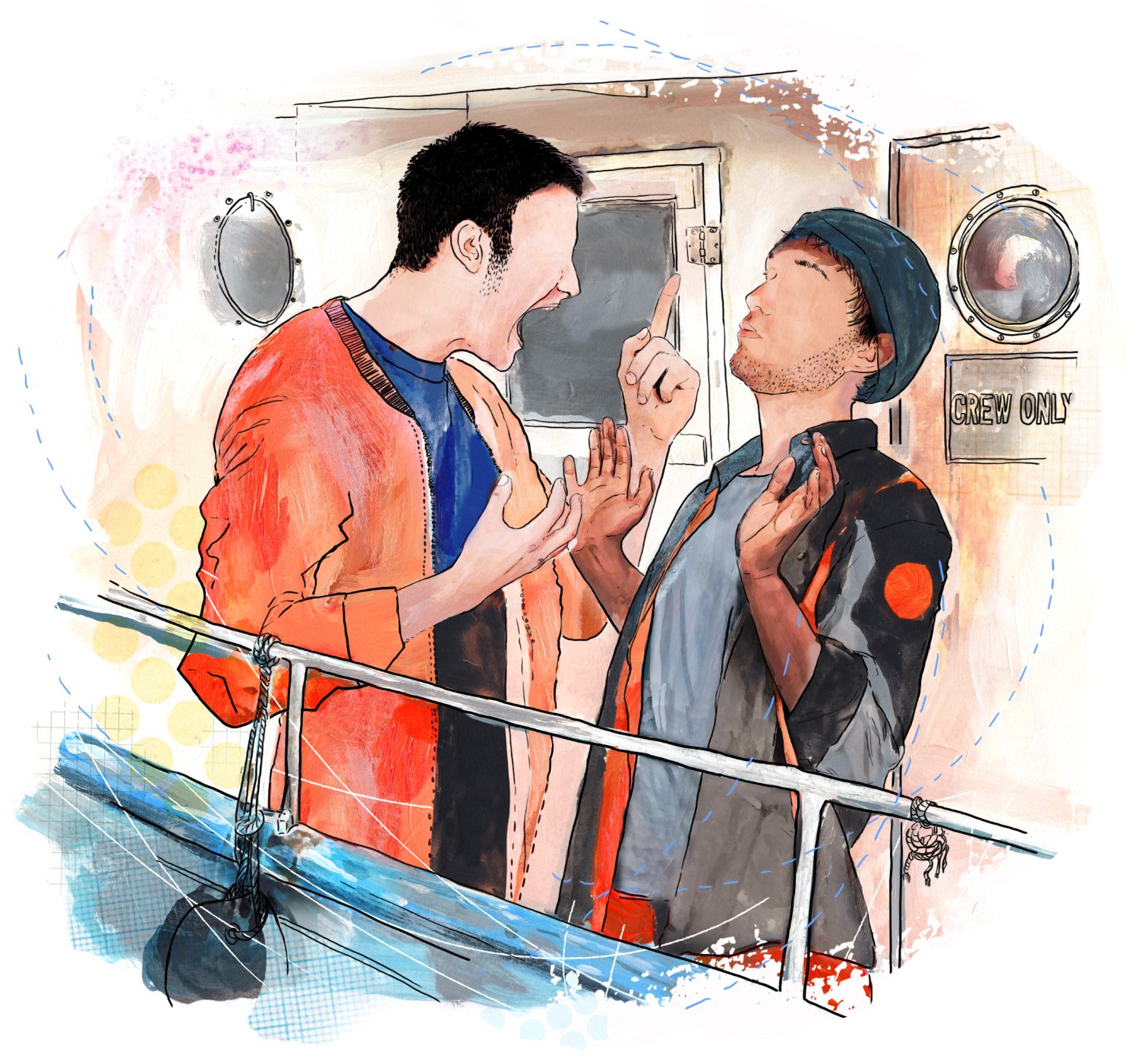



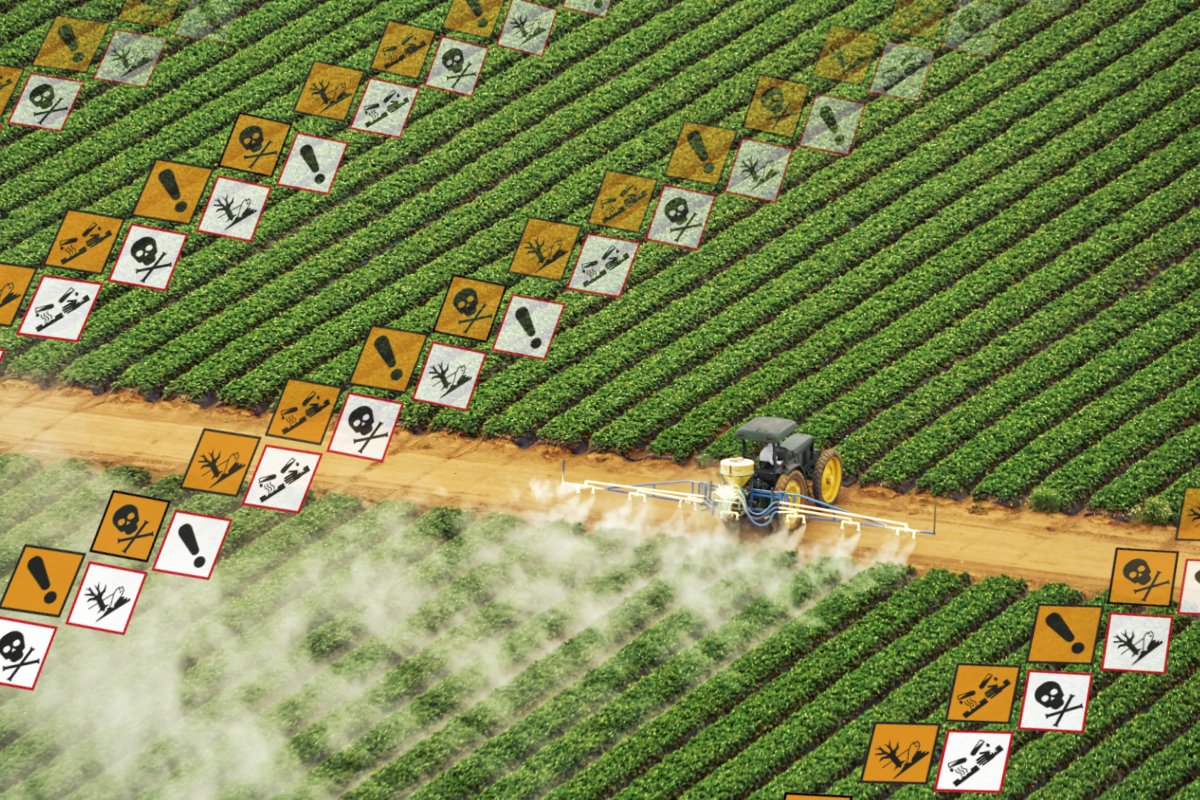
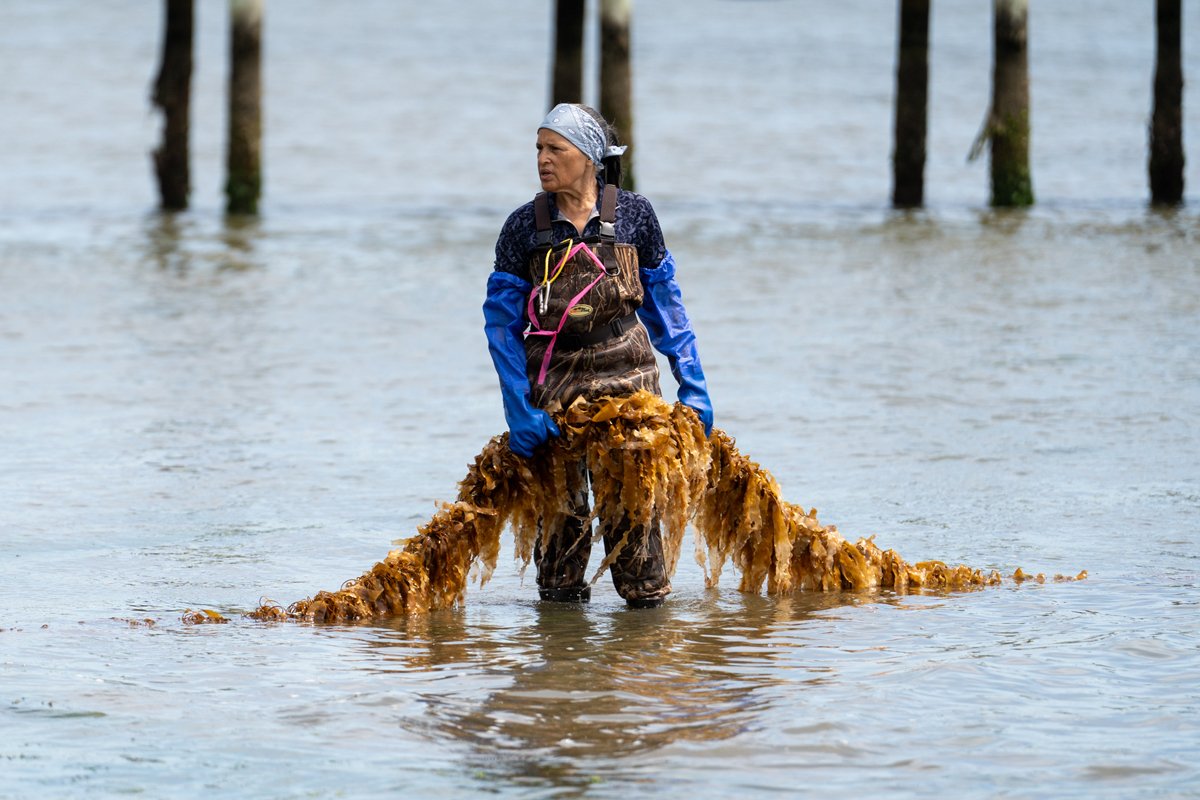


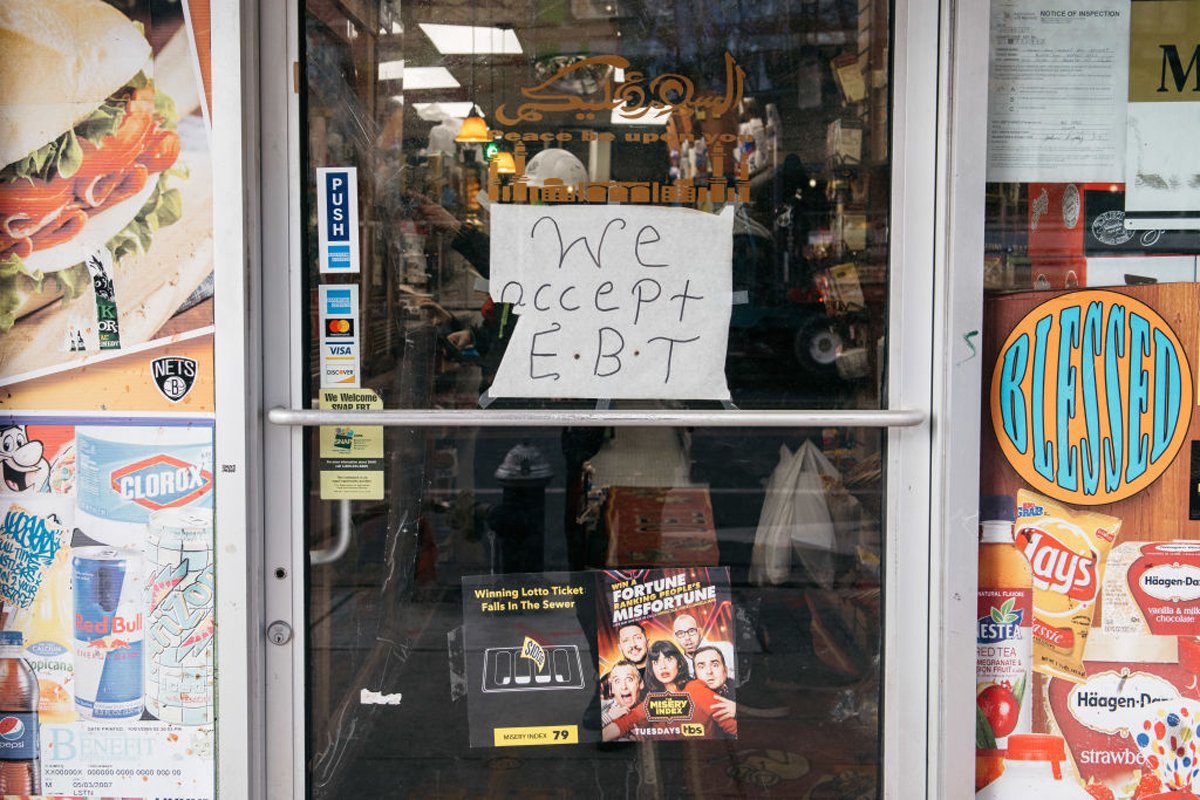


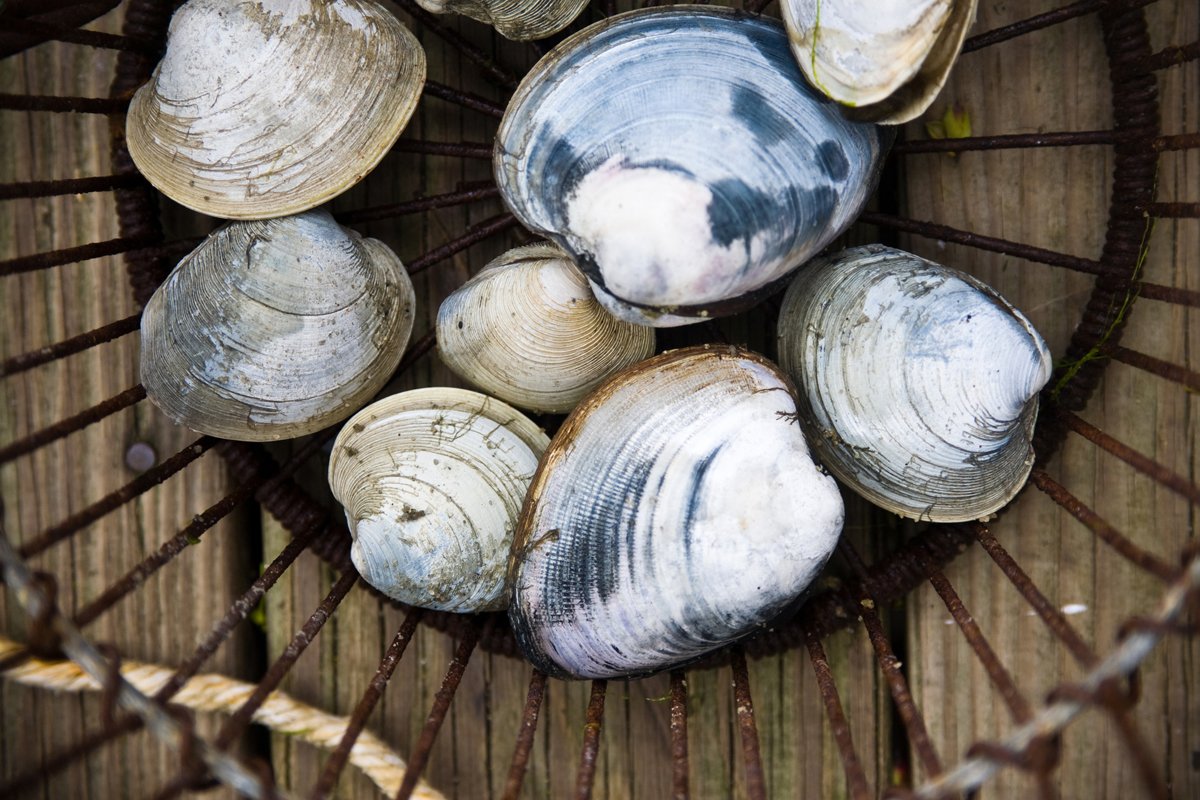



It also needs stressing that the majority of participants are trying meet and exceed standards such as MSC. For example:
Troll caught albacore from smaller US and Canadian boats is widely available, at historically low prices.
Consumers seeking to support positive change might make the effort to support these fishermen.